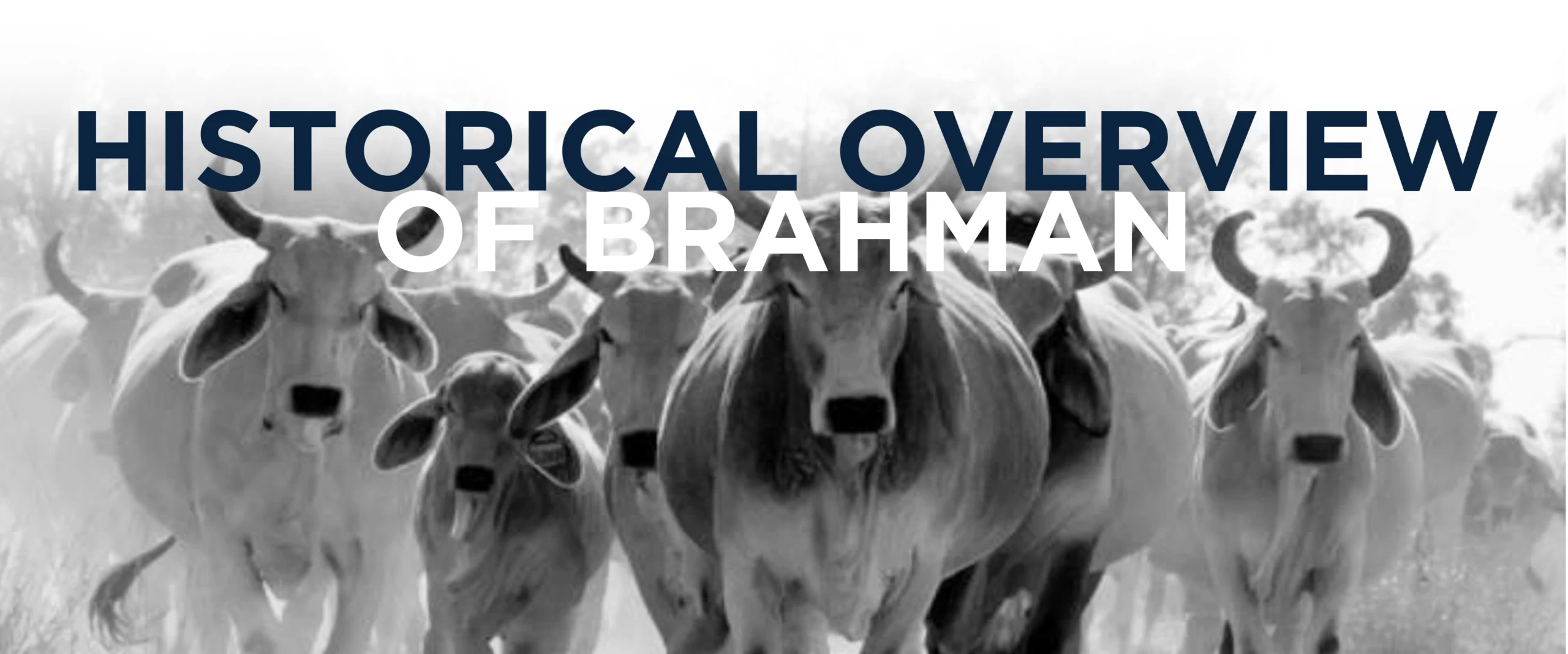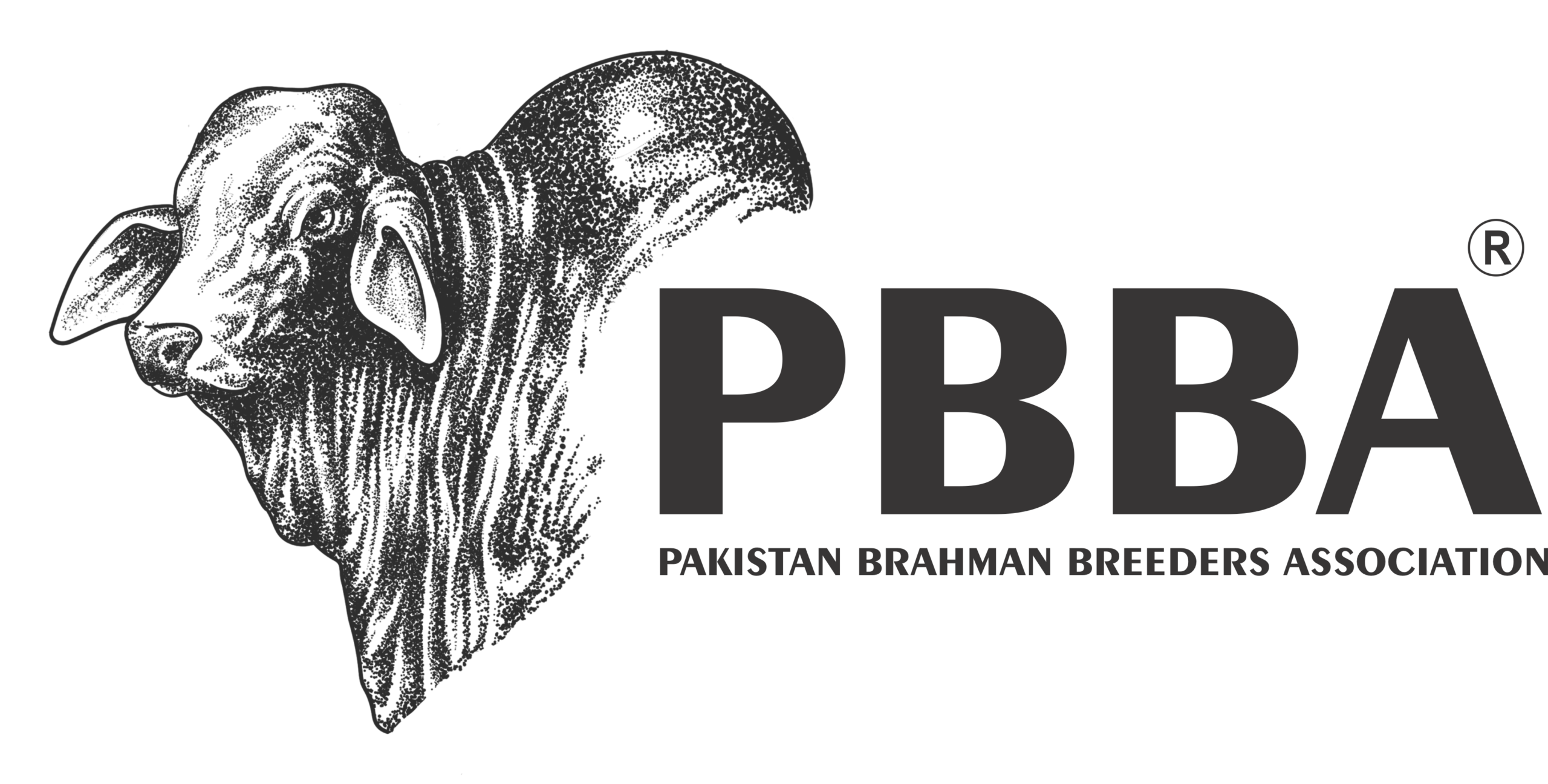
Breed History
Brahman is a breed that was evolved in India and developed in the United States of America. The breed has accumulated distinctive features of survival and efficiency over time due to which Brahman stands out when it comes to environmental adaptability. Brahman has the greatest potential of producing “Hybrid Vigour” during crossbreeding which is why it is known as “Crossbreeding’s Common Denominator”
According to Joe A. Akerman Jr.’s book titled “American Brahman”:
Brahman Name History
There is no evidence regarding the origin of “Brahman” name in the history. In 1850s, however, the different names like “Brahma, Brahman and Braymer” started to appear on newspapers and other publications for animals resulting from the pure- and crossbreeding of native breed animals. In 1835, two bulls and four cows of native breed “Zebu” having characteristic features like hump and dewlap were imported to America from Egypt. Until 1884, every animal with hump or their crossbreds were called as “Brahman” regardless of their color and origin.
Barrow grade Brahmans
Modern Brahman was bred in the United States from cattle which originated in India, and imported at various times after 1885 from the United Kingdom, India and Brazil. Brahman is said to be a combination of breeds like Gir, Nelore and Guzerat or Kankaraj etc. First Indian cattle entry into the United States was reported in 1849 when American Agriculture advisor, appointed in Turkey, received a pair of Indian bulls as a gift from the emperor which he took back home and started cross-breeding with American cattle. In 1854, the newspaper advertisement was published for the first time in which a Brahman bull was seen available as a breeder. The same year, Richard Barrow received probably two or four Indian bulls from the British government as a token of appreciation for his services and later they were imported to America. The progeny of those bulls came to be known as “Barrow grade Brahmans” as they stretched across the American lands around 1875.
The
Frost- Montgomery Brahmans
By 1878, the genetics of the pure-bred Indian cattle and their crossbreds had reduced significantly. In order to reintroduce the Indian blood back into their herds, Captain John N. Keeran and Shanghai Pierce purchased four Indian bulls and one cow from a Dutch ship docked in the United States. Pierce started breeding these newly bought bulls with his long horn cows to produce immunity against diseases. In 1880, livestock Commission Merchants, Albert Montgomery and J. M. Frost, started to purchase a lot of “Brahman Grade” animals because they considered them the best breed for southern hot and humid areas of United States.
Khedive
In 1885, Albert Montgomery and J. M. Frost’s new-found interest became a joint venture as they decided to import a purebred Indian bull and sent their trusted attendant to India for that purpose and he bought a Kankrej bull and a young Nellore bull for himself. However, American govt. did not allow the entry of these Indian bulls but J.M Frost, due to his strong conviction and efforts, finally succeeded to bring these bulls on the American lands after 6 months of Quarantine on an old boat anchored away from the American shores. The “Kankrej” bull later came to be known as “Khedive” reached maximum weight of 816 kgs. Albert Montgomery and J. M. Frost also bought the Nellore bull from their attendant and named it “Richard III”. It is said that all the process had cost them around 6000 USD. In 1895, J. D. Hudgins and their brothers brought some “Brahman Grade” animals from Albert Montgomery and J. M. Frost’s breeding program.
The Visionary
Shanghai Pierce realized the importance and dire need of more Indian origin animals in the United States but he died with this vision in mind. Until 1884, Federal law had made it almost impossible to import the Indian livestock in America. Meanwhile Abel P. Borden, the nephew of Shanghai Pierce, a visionary man like his uncle, decided to carry on his vision. Borden got a special permit during his meeting with chief of Agriculture Department, A. D. Melvin. In that permit, he was conditioned to take a federal Veterinarian to India and embargo was put in place on visit to certain Indian states, because of the danger of severe disease outbreak. Thomas M. O’Connor, who was a well-to-do farmer, invested in the project of Borden and became his partner.
The
Borden-O'Connor Importation of 1906
Borden came to India himself for the purchase of Animals and travelled the distance of over 600 miles and bought 46 bulls, 2 cows, a heifer and 2 calves, which included 22 “Krishna Valley” bulls, 9 Kankrej bulls, 6 “Nellore” bulls and one “Gir” bull. He bought 20 bulls from Miraj, 9 cattle from Ahmedabad, 6 others from Madras. Borden himself prepared the hay bales using cotton press for a journey of two and half months. They reached America via Germany on 6 th June 1906. All animals were quarantine on an island for six months. After five months of persistent examination, a blood parasite “Trypanosoma” was detected in a rabbit’s blood that was used for testing the cattle and the Agriculture Department ordered the culling of all animals. Borden declined to accept the defeat and started a campaign to save Brahman. He raised his voice in a 200 words letter to the President, Theodore Roosevelt and succeeded in recording his protest. Government and Borden reached to an agreement where all animals would be re-examined separately and only those suffering from some ailment would be culled. Quarantine was ultimately lifted after around six months of import and thus 31 healthy animals were transferred to Pierce’s Estate Ranch in Texas. This project cost Borden and his partners over 100,000 US Dollars but returns started quickly when breeders like J. D. Hudgins demanded some animals.
1910 to 1924
The import of 1906 had its unique significance because American farmers went to India themselves for animal selection and most of the bulls when left to graze the quality American grass gained weight over 900 kgs. Due to better fertility, those imported bulls produced innumerable calves in a short period of time. It is said that Borden and O’Connor’s import of 1906 had a unique impact in the evolution of Modern “American Brahman”. 1924 was considered as the last and the most important year for the import of “Bos Indicus” bulls. A total of 90 bulls were brought to America from Brazil via Mexico. American Brahman Breeder Association (ABBA) was also developed in the same year. Through years of extensive selection and unwavering commitment in pursuit of achieving the best, Brahman has transformed in its present state and considered as the breed of ultimate choice for beef production.
